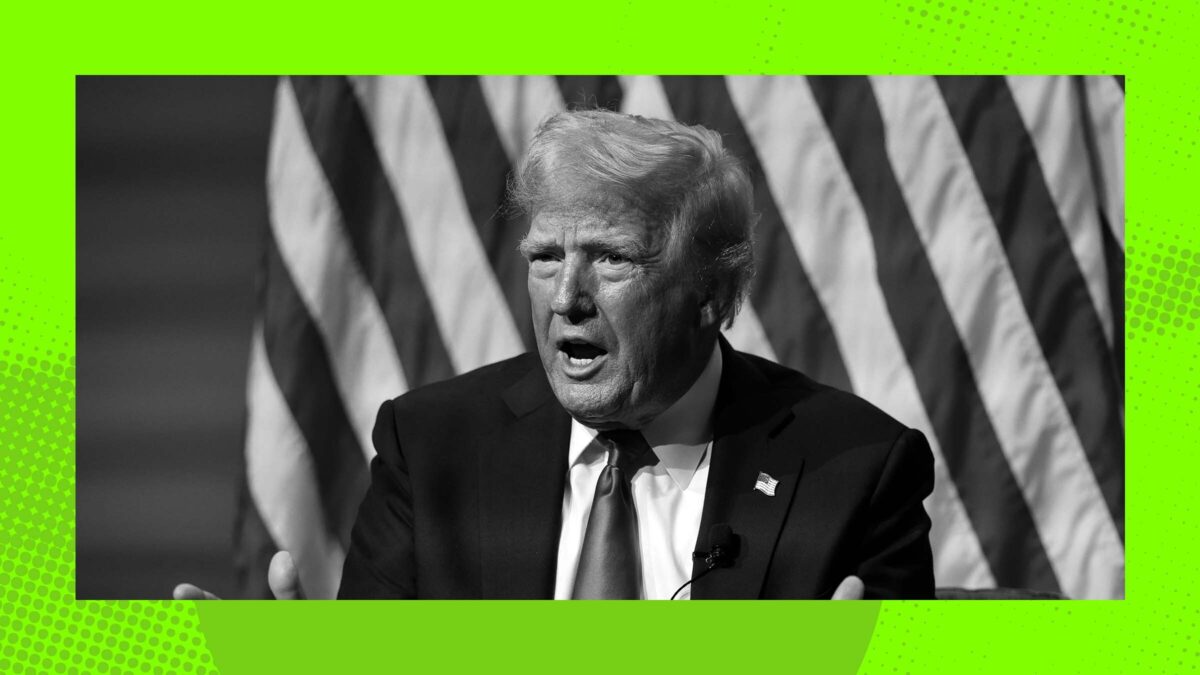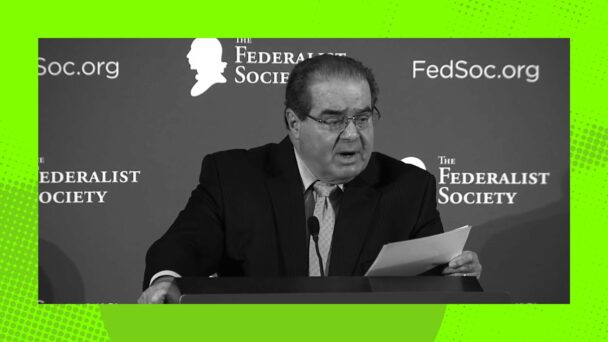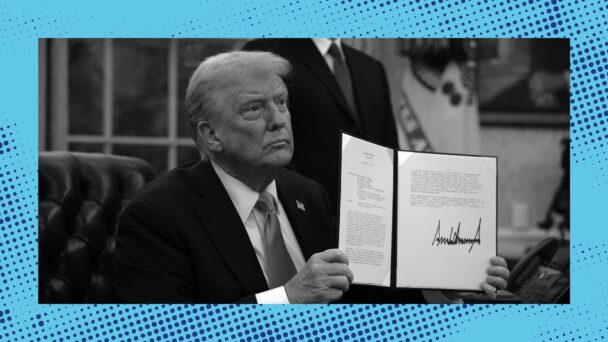In early 2016, Donald Trump was comfortably leading in Republican primary polls, but still courting conservatives who remained dubious of a thrice-married sex pest who’d once described himself as “very pro-choice.” The death of Justice Antonin Scalia in February provided him with an opportunity: With the generous assistance of Federalist Society gremlin Leonard Leo, Trump unveiled a shortlist of people from which he promised to select Scalia’s replacement. The contenders, whom Trump described as “representative of the kind of constitutional principles I value,” were pretty conventional by 2016 GOP standards: mostly federal appeals court judges, mostly Bush appointees, mostly men. All of them were white.
The list, which Trump expanded in September 2016, was a wild and perhaps outcome-determinative success. Skittish Republicans needed to know that a political outsider-slash-game show host like Trump wouldn’t jeopardize the conservative legal movement by, for example, putting his older sister, a then-senior federal judge who’d once had the temerity to rule in favor of abortion rights, on the Supreme Court. Leo’s co-sign gave them the confidence they needed to fall in line: A quarter of those who ultimately cast a ballot for Trump in 2016 said that the Supreme Court’s future was the most important factor in their decision.
The list became Trump’s most valuable carrot to dangle in front of country club Republicans whose respect he craved and whose backing he needed. In late 2017, he put out another version of the list, which for the first time included future justices Brett Kavanaugh and Amy Coney Barrett. In September 2020, he refreshed it once more for his reelection bid that, his beliefs to the contrary notwithstanding, came up short.
To date, though, 2024 has been different. Although he’s been the presumptive GOP nominee since the moment he begrudgingly left the Oval Office, Trump has yet to say whom he might nominate to the Court if he wins this time around. In March, he told a conservative media outlet that he would be releasing a new list of “about 20” names, in part because he is uniquely aware of the potential payoff. “I think it’s important to reveal who your Supreme Court justices will be,” Trump said. “There are people who say the list helped me win the election last time.” In June, citing “sources close to the presumptive GOP nominee,” Fox News reported that Trump still planned to share his list “in [the] coming weeks or months.”
The latest progress report is, if anything, even more vague. In an interview with CBS News on Monday, Trump said his list would at last be ready “over the next three or four weeks”—or, at another point in the interview, “over the next, probably, month or so.” When asked if he’d at least tease any of the names under consideration, Trump’s slackjawed “uhhhh” response was indistinguishable from that of a seventh-grader asked to stand before the class and deliver a book report he didn’t prepare on a book he didn’t read.
Clip via YouTube
The mounting uncertainty has some conservative elites feeling nervous again. In May, the editors at the National Review—the sort of Republicans who lust after Trump’s tax cuts and just wish he were a little more circumspect about the racism—pleaded with the campaign to “clear the air” about its Supreme Court plans. A list that includes “traditional originalists,” they suggested, might be “helpful” with voters who welcomed the Court’s decision to overturn Roe, but found January 6 to be a tad boorish. A list without “respected legal conservatives,” they continued, would make clear “where Trump stands now,” which as far as I can tell makes National Review editors the only people in America who do not already know the answer.
Three months later, their exasperation is turning into desperation. This week, the National Review’s Dan McLaughlin wrote that a “good” Supreme Court list “can’t come soon enough for Republicans,” since it could give “conservatives who mistrust or despise Trump…some positive reason to vote for him.” This is a diplomatic way of acknowledging that however much you might profess to disapprove of the whole “violent insurrection” thing in polite company, it will take precious little to persuade you to vote to put the man responsible for it back in the White House.
As I wrote earlier this year, part of the tension here is that Trump has ended his uneasy alliance with the Federalist Society luminaries who dictated his first-term nominations agenda, mostly because—I am not making this up—he remains angry about their cowardly reluctance to overturn the 2020 election. He is apparently no longer on speaking terms with Leo, surrounding himself instead with religious extremist types who are (even more) on the fringes of the conservative legal movement. If Trump does win a second term in office, in other words, the pro-coup, anti-choice freaks he’ll consider for vacant Supreme Court seats will probably make Neil Gorsuch look like a liberal squish.
At the same time, the Trump campaign understands that right now, discussing anything Supreme Court-adjacent is about as electorally poisonous as electoral poison gets. Just 43 percent of Americans approve of the Court’s job performance, and 57 percent believe its decisions are driven “mainly by politics.” People remain especially incensed by the Court’s decision to overturn Roe v. Wade, which, per a May Gallup poll, 60 percent of voters think was a “bad thing.”
These dismal numbers are a direct consequence of Trump’s impact. As recently as September 2020, shortly before the death of Justice Ruth Bader Ginsburg, the Supreme Court’s approval rating stood at 66 percent, and 62 percent of respondents believed the justices’ decisions were motivated “mainly by the law.” (For reference, Congress’s approval rating was 17 percent.) Against all odds, people have not always viewed the Court as composed of partisan hacks, but they have been more confident than ever in that assessment since Trump overhauled it.
Trump has spent his entire life blowing off stuff that people are insisting he has to do, and it is very possible that he isn’t coughing up a 2024 Supreme Court shortlist because he doesn’t feel like making one. But if there is a list, it would make a ton of sense for him to stall, because the people he’d put on it are almost certainly deranged weirdos, and he and/or his handlers would be quite sensible to concluded that he’s unlikely to benefit from drawing (even more) attention this fact. What groveling simps like McLaughlin don’t understand is that when they beg Mister Trump for his list of “respected legal conservatives” for the Supreme Court, they are begging someone who does not care about them for something that does not exist.
Over the past three-plus years, this Court’s six-justice conservative supermajority has accomplished more for the GOP agenda than any elected official alive today. The challenge for Republicans is that normal people absolutely hate this living revanchist nightmare, and do not want politicians who will extend it any further. As a result, eight years after a clear-eyed, ambitious Supreme Court agenda propelled Trump to the White House, he’s stuck hemming and hawing when asked what he’d do for an encore, hoping he can make it to November before anyone correctly clocks him as full of shit.







